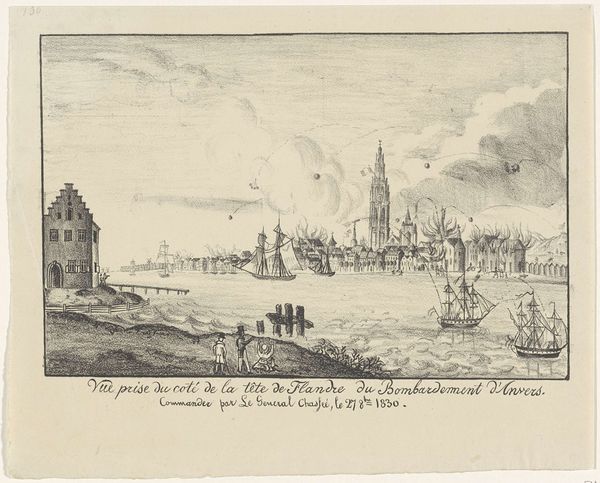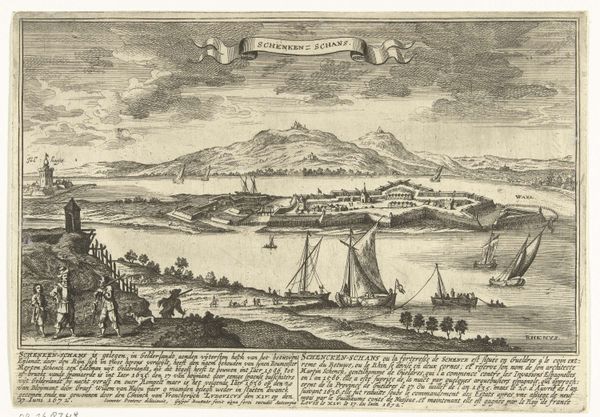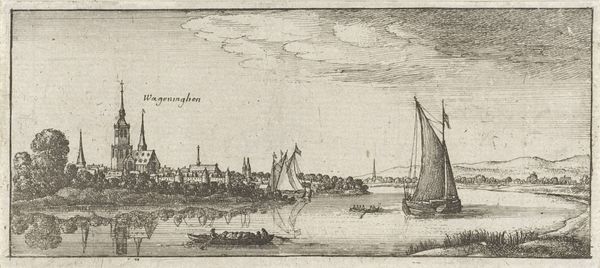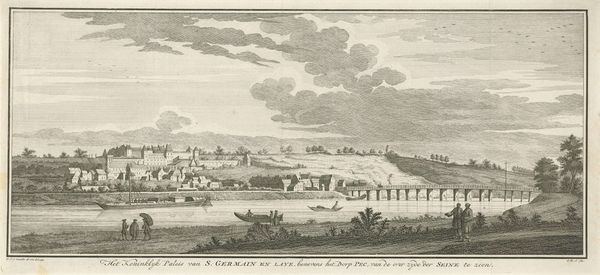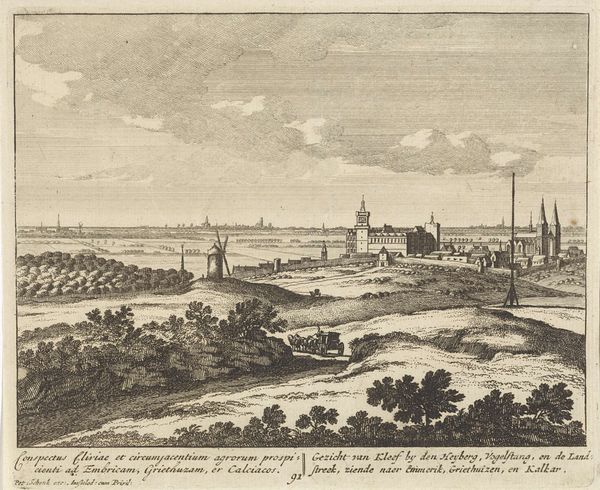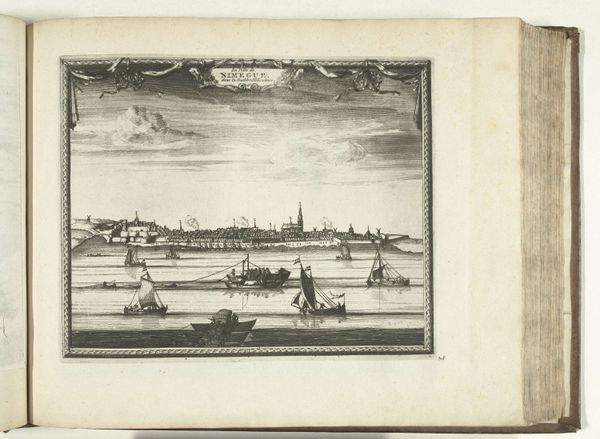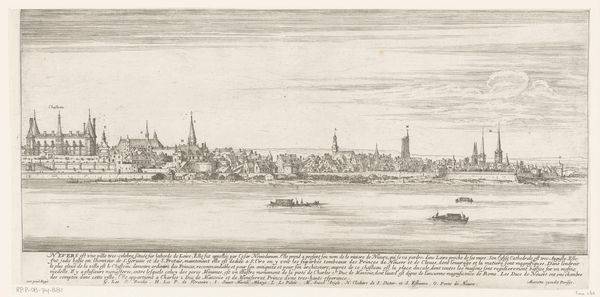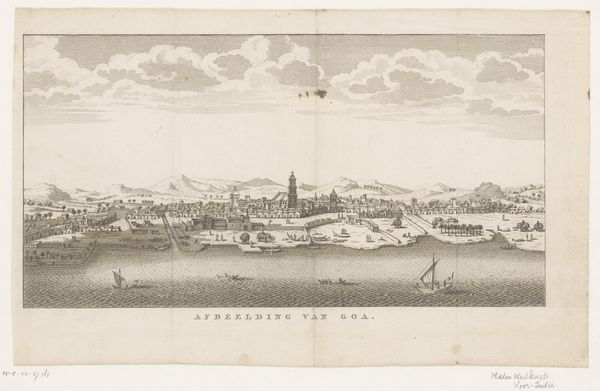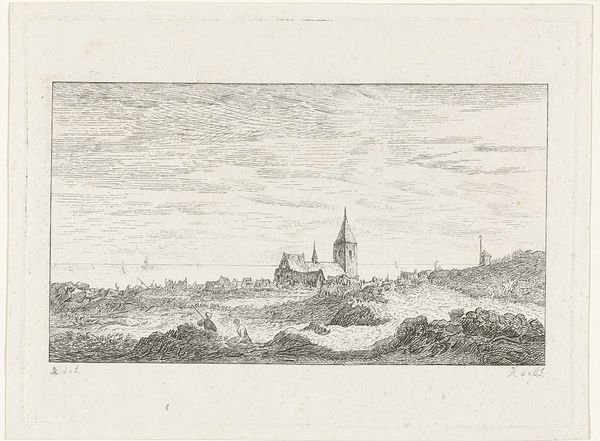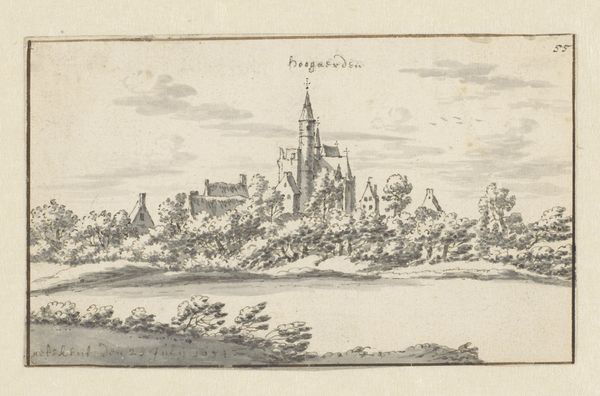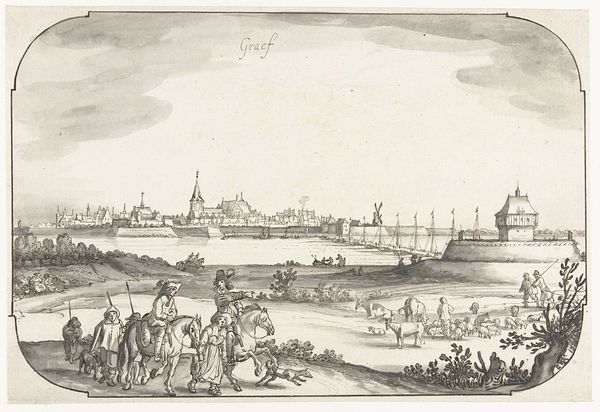
print, etching, engraving
#
baroque
#
dutch-golden-age
#
ship
# print
#
etching
#
old engraving style
#
landscape
#
cityscape
#
engraving
Dimensions: height 132 mm, width 170 mm
Copyright: Rijks Museum: Open Domain
Curator: Standing here, we’re observing Pieter Schenk’s rendering, in print, of *Het strand bij Scheveningen*, dating from around 1695 to 1705. Editor: It feels like a bustling snapshot in monochrome, a freeze-frame of 17th-century coastal life. The sky alone has this chaotic energy, juxtaposed against what looks like a pretty rigid social scene. Curator: Schenk, a pivotal figure in late Dutch Golden Age and early Baroque printmaking, situates this lively beach within the broader visual culture that solidified Dutch identity during a period of rapid economic expansion and burgeoning maritime power. What interests me are the structures imposed on depicting this scene. Editor: And it's that structure that really interests me, too! The layered composition – the elevated church against the grounded workers at the beach. How might those people at the shoreline experience or challenge these spatial and, therefore, social boundaries in their daily lives? Curator: Consider that the beach at Scheveningen was not simply a picturesque location. It functioned as a stage for commerce, labor, and leisure, each intertwined and reflecting the complex social hierarchies. This print was intended for a viewership keenly aware of these relationships, reinforcing a specific image of Dutch prosperity and order. Editor: I think Schenk invites us to question whose labor really greases the wheels of such scenes. This wasn’t merely the idyllic vista that many profit from now; for many then, as now, the beach was their literal workplace. This piece can prompt important conversations around labor, leisure, and the visual economies within landscape art. How do depictions like this serve to romanticize or perhaps even erase the working class? Curator: Indeed. The seeming casualness of the beach scene belies the intense activity and social stratification taking place. It provokes inquiries into the creation and distribution of such imagery and its contribution to a developing Dutch consciousness. Editor: Right. What initially reads as a simple seascape really asks profound questions about social space, labor equity, and how images perpetuate certain societal structures that affect the labor class. It's always about peeling back those layers to find the harder questions beneath the beautiful surface.
Comments
No comments
Be the first to comment and join the conversation on the ultimate creative platform.
